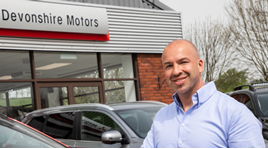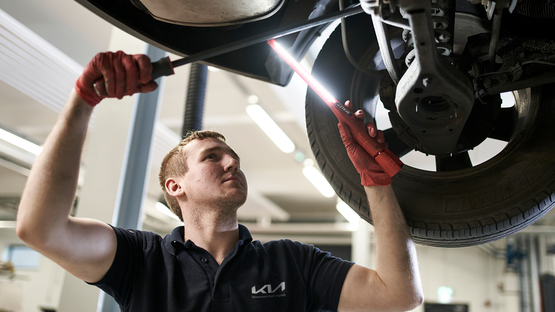Even the traditionally slender margins that car dealerships make on new and used car sales once all the overheads have been factored in, aftersales is key to profitability.
But what constitutes a healthy level of profitability? What defines successful service plans, MOT testing, vehicle health checks (VHC), video walkarounds and other aftersales offerings?
And what about upselling essential ‘red’ repair work identified in an MOT or service and rebooking less urgent ‘amber’ work?
“The holy grail of aftersales is providing excellent customer service while having highly-effective process controls in place,” says Nick Squire, business unit director at Snap-on Business Solutions.
“Understanding the customers’ needs and delivering the vehicle back at the promised time also creates customer loyalty.”
UPSELLING THE SOLUTION
Aftersales has come a long way from just 20 years ago, when the aim was to have an absorption rate above 100% and anything more was a nice profit after the staff, rent and bills had been paid.
Now, the function has changed markedly, focusing more on customer satisfaction and retention, highlighting problems identified by a VHC and then upselling the solution.
“Red and amber work has become the key performance indicator for many dealers, meaning that aftersales is now more about profitability,” says Alistair Horsburgh, chief revenue officer at CitNOW.
“There’s a desire to want to sell as much as possible to the customer.”
To best capture this opportunity, dealers should clearly explain all red and amber items to the customer and offer to do the work.
If they don’t book immediately, the dealer should follow-up with them after three-to-six months via their preferred contact method with the original video walkaround attached, if done by text or email.
 “Perhaps the worst failure of all is how we typically handle amber repair work, in terms of rebooking the identified opportunity,” says Nathan Tomlinson, dealer principal at Devonshire Motors.
“Perhaps the worst failure of all is how we typically handle amber repair work, in terms of rebooking the identified opportunity,” says Nathan Tomlinson, dealer principal at Devonshire Motors.
“In time, all amber work turns red, regardless of whether you have correctly or incorrectly estimated remaining wear, and it turns red whether the vehicle is retained by the dealer or not.
“Therefore, the best way to sell amber work is to retain the customer. Today, through a combined culture in sales and aftersales, we aim to have all our customers on a three-month VHC cycle so that as well as an annual service we see them for four VHC visits across the year too.”
The increasing use of cutting-edge tools such as video technology has also added more trust and transparency to the process.
By being able to show the customer what is wrong with their vehicle and the work required via video, dealers reduce the time taken for a technician to explain the issue to a service advisor, who then relays the same message to the owner.
MOT testing is one of the most profitable sources for franchised dealers.
However, in recent years they have lost market share to independent dealers who have undercut them on price and lead time.
Service plans are vital to retailer profitability too, with many now offering them as standard when selling a new vehicle.
They are a guaranteed income stream and, if delivered well, ensure repeat business.
 “Service plans such as Kia Care are the best way to guarantee customers have their car serviced and MOT’d at a dealership,” says Chris Lear, aftersales director at Kia UK. “Increasing the sale of retail workshop hours and associated parts should be a key priority.
“Service plans such as Kia Care are the best way to guarantee customers have their car serviced and MOT’d at a dealership,” says Chris Lear, aftersales director at Kia UK. “Increasing the sale of retail workshop hours and associated parts should be a key priority.
“Our analysis shows that customer retention is three times more likely at the point of the third service if they have a Kia Care service plan. Many will agree that the sale of a service plan to new and used car customers is second only to the sale of the car itself.”
However, under the service plan, dealers are only compensated by manufacturers at a lower recovery rate for labour time than if they were to do work paid for on the day.
That trend is likely to be exacerbated by manufacturers assuming greater control of service plans as they move towards an agency model.
Video walkarounds can drive greater efficiency both in terms of time saved and customer engagement too.
They also give the customer certainty that they vehicle has been fully inspected and their problem fixed. “Any dealer that isn’t using video walkarounds to improve trust and transparency in their workshop is missing out on a big opportunity,” said Horsburgh.
“Most customers who have had their vehicles serviced in a franchised dealership at some point in the last two to five years will have received a video of their vehicle being serviced, so much so it has become the norm.”
AFFORDABLE SOLUTIONS
While VHCs are a big revenue driver for dealers, they need to ensure that the work is affordable for the customer, with the flexibility to spread payments with 0% finance over a short term.
There must also be greater focus on providing the customer with the solution they need rather than merely selling for profit.
“The very best dealers drive a culture of 100% VHC process for maximising all customer potential work, thus ensuring no opportunity is missed,” says Squire.
“Dealers who embrace technology and use these to drive increased process and customer loyalty will always gain increased profitability over those who don’t.”
Despite all of these new technological advancements, automotive consultant Mike Jones says that too often the message around the work required is lost on the customer.
Instead, dealers need to focus more on communicating the problem and solution clearly.
“Dealers still tend to get caught up in the terminology,” said Jones.
“Rather, they need to make sure they use a language that the customer will understand and don’t feel intimidated by.”
Key to strong aftersales too is data automation. Managed effectively, dealers can drive sales through relevant and timely follow-up reminders, yet often they are let down by outdated and inefficient systems.
 “A big problem is data quality,” says Jeremy Evans, managing director of Marketing Delivery.
“A big problem is data quality,” says Jeremy Evans, managing director of Marketing Delivery.
“Dealers might have incorrect due dates for MOTs and services, incomplete or incorrect customer contact details, or may have not even gained permission to contact them in the first place, which means they can’t contact them when they need to.
“Data automation has really come into its own over the past 18 months during the height of the COVID-19 pandemic with staff numbers cut as dealerships were forced to close due to lockdown. They were able to send out reminders and make bookings automatically, while, in some cases, still maintaining 60%-plus retention rates.”
With the right processes in place, aftersales can play a vital role in dealer profitability moving forward.
Right now, given the impact of the COVID-19 crisis, that is more important than ever for retailers.
“Great success in aftersales comes from a strong performance which is constantly reviewed,’ Jones concludes.
“It also needs to have the right people in the right positions who have received the required training, and listen to and work with the customer.
“From a service plan perspective, this means everyone in the department is fanatical about – and fully focused on – selling service plans and ensuring all their customers have one. The same applies to video walkarounds and all the other elements of aftersales.”
Author: Alex Wright















Login to comment
Comments
No comments have been made yet.